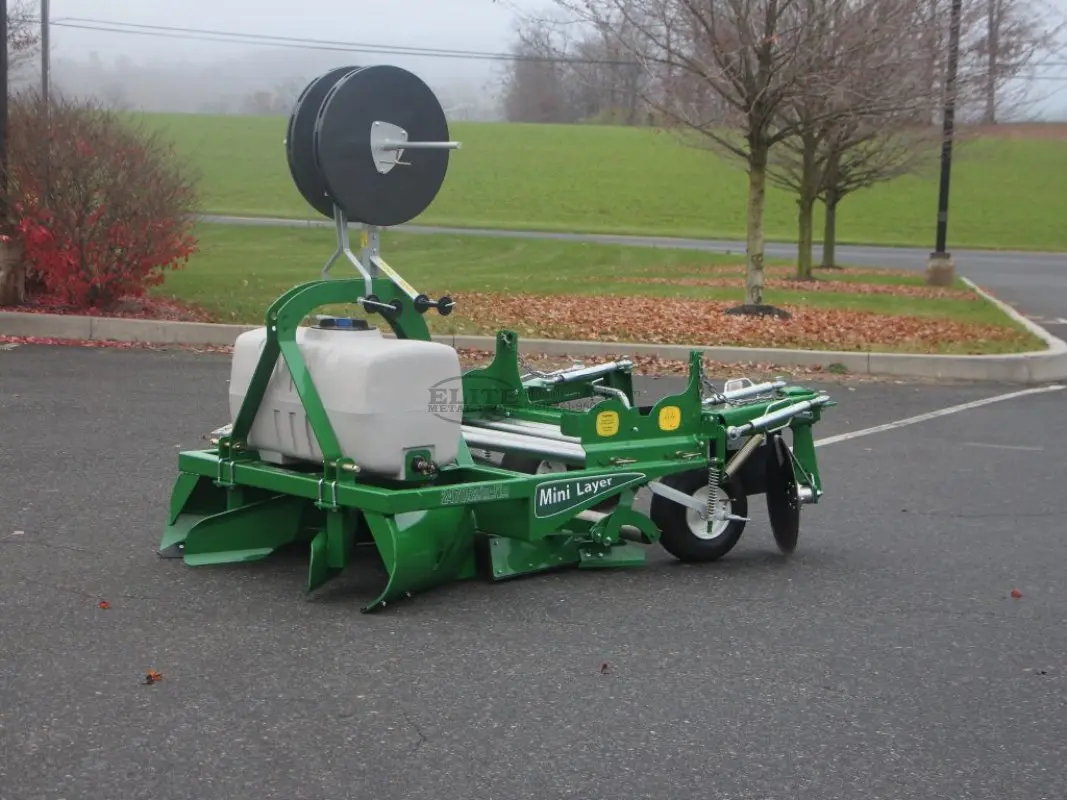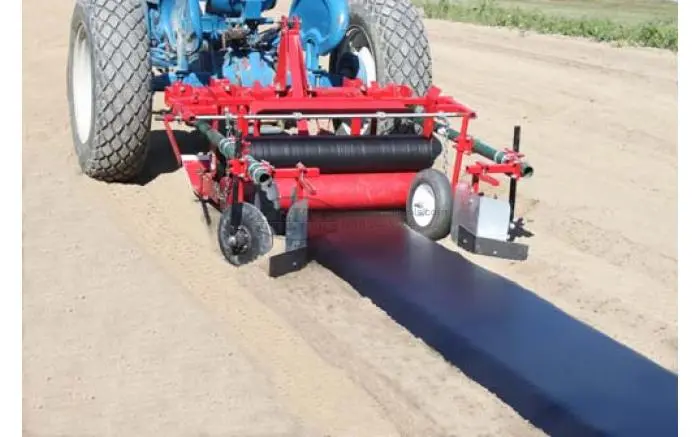Elite Metal Tools Articles
Industry news, tips, and updates on all things Elite Metal Tools
Mulch Layers - Let's Learn About
Maximizing Farming Efficiency with Mulch Layers
Introduction: In the realm of modern agriculture, innovative techniques and equipment have revolutionized farming practices. One such advancement is the utilization of mulch layers. These remarkable tools have proven to be indispensable in enhancing crop production, reducing labor, and improving overall farming efficiency. In this article, we will delve into the history of mulch layers, explore their benefits, discuss different types and installation techniques, highlight their contribution to sustainable farming practices, and include additional topics such as mulch layer comparison, case studies, regional considerations, and troubleshooting tips. By the end, you'll have a comprehensive understanding of mulch layers and their role in modern agricultural systems.
The History of Mulch Layers: Mulching as a farming practice dates back centuries, but the development of mechanized mulch layers is a relatively recent phenomenon. The first mechanical mulch layers emerged in the mid-20th century, revolutionizing the way farmers approach weed control, moisture retention, and soil temperature regulation. These early machines were rudimentary compared to the advanced mulch layers available today. Over the years, technological advancements and innovations have led to more efficient and versatile mulch layers that cater to the diverse needs of farmers worldwide.
Benefits of Using Mulch Layers: Mulch layers offer a wide range of benefits that significantly impact crop production. Let's explore these advantages in detail:
-
Weed Suppression: Mulch layers effectively smother weeds, reducing competition for nutrients and sunlight. This leads to healthier crops and higher yields, as the plants can thrive without being hindered by aggressive weed growth.
-
Moisture Retention: By acting as a protective barrier, mulch layers reduce evaporation and help retain soil moisture. This is especially crucial in regions with limited water resources, as it optimizes irrigation and reduces the water required to sustain crops.
-
Soil Temperature Regulation: Mulch layers create a microclimate by insulating the soil, preventing extreme temperature fluctuations. This fosters optimal conditions for plant growth, protects the root system, and promotes better nutrient uptake.
-
Erosion Control: The use of mulch layers helps mitigate soil erosion caused by wind and water. It preserves the topsoil, which is rich in nutrients, and prevents nutrient runoff, ensuring that crops receive the necessary nourishment.
-
Disease Prevention: Mulch layers act as a physical barrier between the soil and plants, minimizing soil-borne diseases. This reduces the need for chemical treatments, making farming practices more environmentally friendly.
-
Increased Yields and Quality: The combined benefits of weed suppression, moisture retention, soil temperature regulation, erosion control, and disease prevention contribute to increased crop yields and improved produce quality. Farmers can achieve more bountiful harvests and deliver healthier, more marketable crops.
Types of Mulch Layers: There are various types of mulch layers available, each with its own characteristics and suitability for different farming practices. Let's discuss the most common types:
-
Organic Mulch Layers: Made from natural materials such as straw, hay, or compost, organic mulch layers offer biodegradability and can enhance soil health over time. They provide an environmentally friendly option and contribute to the long-term fertility of the soil.
-
Plastic Mulch Layers: Plastic mulch layers are widely used in commercial farming due to their durability and ability to enhance crop yields. They effectively suppress weeds, retain moisture, and promote earlier and higher-quality harvests. The plastic material also helps warm the soil, allowing for extended growing seasons.
-
Biodegradable Mulch Layers: These innovative mulch layers are designed to break down over time, eliminating the need for removal after the growing season. They provide the benefits of conventional mulch layers while reducing the environmental impact associated with plastic waste.
Mulch Layer Comparison: When considering mulch layers for your farm, it's essential to compare different brands and models to make an informed decision. Here are some popular brands known for their quality and performance:
-
Mechanical Transplanter: Mechanical Transplanter offers a range of mulch layer models designed to meet the specific needs of farmers. Their mulch layers are known for their durability, precision, and ease of use. With innovative features and reliable performance, Mechanical Transplanter mulch layers are trusted by farmers for effective weed control and moisture retention.
-
Rain-Flo: Rain-Flo is another reputable brand that provides reliable and efficient mulch layers for farmers. Their mulch layers are designed to ensure proper mulch placement, even coverage, and effective weed suppression. Rain-Flo mulch layers are built with durability in mind, allowing farmers to achieve optimal results season after season./product/15211
Comparing the features, specifications, and customer reviews of different models from Mechanical Transplanter and Rain-Flo will help you select the mulch layer that best suits your farm's requirements. It's recommended to consult with local agricultural experts or equipment suppliers to determine the most suitable mulch layer option for your specific needs.
Case Studies: Real-life case studies and success stories provide valuable insights into the practical application of mulch layers. Here are a few examples:
-
Farmer's Success Story: John Smith, a vegetable farmer, adopted plastic mulch layers in his farm operations. By using the Mechanical Transplanter Mulch Layer, he experienced a significant reduction in weed growth, improved water conservation, and an overall 30% increase in crop yield. The mulch layers also allowed him to extend the growing season, leading to early and profitable harvests. /product/1087
-
Small-Scale Farm Case Study: Mary Johnson, a small-scale organic farmer, implemented biodegradable mulch layers in her farm to align with her sustainable farming practices. The Mechanical Transplanter Mulch Layer helped suppress weeds and conserve moisture while providing the benefits of traditional mulch layers. Mary's farm saw a notable reduction in labor costs and an increase in soil health and productivity.
Regional Considerations: Different regions may have specific considerations when using mulch layers. Factors such as climate, soil type, and crop selection can influence the effectiveness and choice of mulch layers. Farmers in arid regions, for example, may opt for mulch layers that focus on moisture retention, while those in colder climates may prioritize soil temperature regulation. It's important to consult with local agricultural experts or extension services to determine the most suitable mulch layer options for your specific region.
Troubleshooting and FAQs: While mulch layers offer numerous benefits, occasional challenges may arise. Here are some common troubleshooting tips and frequently asked questions related to mulch layers:
-
Weed Penetration: If weeds manage to penetrate the mulch layer, consider spot treating with approved herbicides or resort to manual removal.
-
Uneven Mulch Coverage: Inadequate mulch coverage can occur due to improper installation or shifting. Regular inspections and adjustments can help ensure uniform coverage.
-
Irrigation Management: Proper irrigation is crucial to maintaining consistent moisture levels beneath the mulch layer. Monitor soil moisture and adjust irrigation accordingly to prevent over or under-watering.
Conclusion: Mulch layers have revolutionized farming practices by improving efficiency, conserving resources, and enhancing crop production. By understanding their history, benefits, types, installation techniques, and maintenance, and incorporating additional topics such as mulch layer comparison, case studies, regional considerations, and troubleshooting tips, farmers can harness the power of mulch layers to maximize yields while minimizing environmental impact. Embrace the potential of mulch layers and witness the transformative effects they can have on your farming operations.

